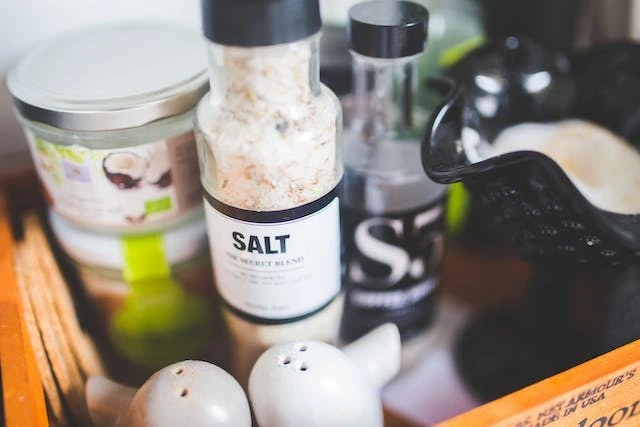How Much Sodium Do We Need?
Sodium is one of the most common sources of flavour in our food, and is found in virtually everything we eat. Over consumption of sodium is a major factor in our self-inflicted poor health. Health Canada reports that the average Canadian takes in about 3,400 milligrams of sodium each day. However, the government-recommended daily limit now is 2,300 mg, with the current medical and scientific communities recommending a limit of 1,500 mg per day.
The effects of excess sodium on our bodies are wide-ranging.

First, it can cause us to retain fluid in our bodies, causing bloating. This fluid retention can lead to high blood pressure (hypertension), which can then be a significant factor in heart disease and stroke. Another by-product of excessive sodium over a period of time can be kidney disease. One of the kidneys' jobs is to filter out and purge excess sodium from the body. Unfortunately, putting that much extra stress on the kidneys over the long term can damage the kidneys - and once they are damaged, kidneys don't recover.
There are three main sources of sodium in our diet.
There is naturally occurring sodium in many foods including meat, vegetables and dairy products. The second source is sodium added to prepared or processed foods, which includes takeout, restaurant meals, and snacks. The third source, often overlooked, is condiments. For example, one tablespoon of Heinz ketchup contains 140 mg, or 6% of the daily recommended sodium - and who uses just one tablespoon of ketchup with their fries, meatloaf, or Western sandwich?
Kikkoman Stir Fry Sauce contains
520 mg, or 22% RDA (Recommended Daily Allowance)in a single tablespoon. Fond of curry paste?
Patel's Tandoori Mild Curry Paste has a staggering 1180 mg of sodium in 2 tablespoons, or 22% of the
RDA.
Let's look at a popular breakfast choice:
Tim Horton's Breakfast Bagel BELT, orange juice, milk and coffee:
Bagel:1000 mg
Orange juice (1 cup, 250 ml) 2 mg
Milk (1 cup, 250 ml) 100 mg
Coffee, medium size, double-double 50 mg
So now we'll build a ham and cheese sandwich at home to take for lunch.
Two slices of commercial bread 480 mg
1 slice (55 g) Maple Leaf ham 450 mg
2 tablespoons Hellman's Light Mayonnaise 270 mg
1 slice (28 g) Swiss Cheese 54 mg
1 spear of dill pickle on the side (35 g) 306 mg
And for dinner, let's choose some pasta:
Meatless Cheese Filled Tortellini with Tomato Sauce, 1 cup (250 ml) 1560 mg
2 small slices garlic bread with butter 195 mg
Tossed Salad, Dole American Blend packaged salad, 1.5 cups (85 g) 10 mg
Renee's Original Caesar Dressing, 1 tablespoon 60 mg
Dessert: 3 Original Oreo cookies 160 mg
The sodium totals are:
Breakfast: 1152 mg sodium
Lunch 1560 mg sodium
Dinner 1985 mg sodium
Grand Total
4697 mg sodium
Granted, you may not make all of these high-sodium choices in a single day, but it serves to illustrate some of the surprising sources of sodium we take in on a regular basis.
However, our bodies do need some sodium every day, for some critical functions. Sodium in appropriate amounts helps to control blood pressure and blood volume. This important electrolyte helps control the volume of fluid in and around our cells, helps muscles to contract and release, and helps our nerve impulses transmit efficiently.
So what can you do to reduce your sodium intake? First, become a label reader. That 5% here and 12%
there may seem like not much, but they do add up. Second, choose to cook at home much more often,
being conscious of how much sodium is in the ingredients in your recipe. A recipe that calls for a can of
this, a box of prepared that, and so forth, is likely a landmine of hidden sodium. check out recipe books
that give nutritional information per serving - and make sure you measure the serving correctly!
Also, make good use of herbs and spices to punch up flavour in your recipes, instead of salt. Don't be
afraid to leave out the salt and experiment with herbs and spices that are new to you. You may create a
new family favourite.
A good tip for grocery shopping is to shop the perimeter of the store for fresh, non-processed foods, and
avoid anything that calls itself processed, a "food product", or "convenient". These items are usually high
in sodium and nutritionally poor in other ways as well. Products that are marketed towards kids are often
suspect, not only for high sodium, but also for very high sugars, and low fibre content.